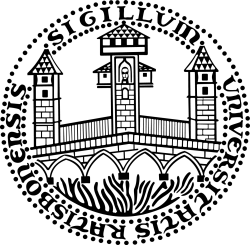 |
Homepage Contact Research Links Teaching CV Publications |
Current issues:
Class data:
|
| time | room |
| Wed 10:00-12:00 c.t. | Physik, PHYG - PHY 9.2.01 |
| Thu 10:00-12:00 c.t. | Physik, PHYG - H34 |
Exercises:
| time | room | group tutor |
| Mon 10:00-12:00 c.t., | Physik, PHYG - PHY 9.2.01, | Bernhard Lang/Cosimo Gorini [Zentralübung (52103)] |
| Tue 15:00-17:00 s.t., | Physik, PHYG - PHY 9.1.10, | Cosimo Gorini |
| Wed 17:00-19:00 c.t., | Physik, PHYG - H33, | Moritz Frankerl |
| Fr 12:45-14:45 s.t., | Physik, PHYG - PHY 5.0.20, | Maximilian Emmerich |
| Fr 15:00-17:00 c.t., | Physik, PHYG - PHY 9.1.09, | N.N. |
Exam
Exam takes place on the 21.07.16, 10:00 s.t. in H34.Registration for the exam is possible after the 25.04.
The repeat exam takes place on the 12.10.16 in PHY 9.2.01, 10:00-12:00 st.
Question time
| time | room |
| Mo 10:00-12:00 c.t. | Physik, PHYG - PHY 9.2.01 (Zentralübung (52103)) |
Literature
- Christian Lang, Norbert
Pucker: Mathematische
Methoden in der Physik, Springer 2005
- Jänich: Mathematik 1, Springer
- H. Schulz: Physik mit Bleistift, Verlag Harri Deutsch, 2006
- Königsberger: Analysis 1,2, Springer
- Otto Forster: Analysis 1, Vieweg
- Gerd Fischer: Lineare Algebra, Vieweg
Exercise sheets
- Sheet 1
- Sheet 2
- Sheet 3
- Sheet 4
- Sheet 5
- Sheet 6
- Sheet 7
- Sheet 8
- Sheet 9
- Sheet 10 (V2)
- Sheet 11 (V2)
- Sheet 12
- Sheet 13
- Testklausur, Testklausur+Lösungen
Add-on
-
Complex numbers multiplication <--->
-
From the Taylor expansion of the $\exp$-function at $x=1$ we know that
$\exp(x)=\lim\limits_{n \rightarrow \infty}{\left(1+ \frac{x}{n}
\right)^n}$. This gives us a nice graphical interpretation of the
relation $\exp(i\pi)=-1$ since $\exp(i\pi)=\lim\limits_{n
\rightarrow \infty}{\left(1+ i\frac{\pi}{n} \right)^n}$. Doing a
finite ($n_{\text{max}}$ is finite) multiplication of numbers
$\left(1+ i\frac{\pi}{n} \right)$ looks as
follows: complex_mult.cdf
[To open the cdf file download the player by clicking on the pic below or open it in Mathematica]. We see how $\left(1+ i\frac{\pi}{n} \right)^n$ is approaching -1. - Historical notes on trigonometric functions: wiki
- Example of a product of two Levi-Civita tensors with contractions: demonstrations.wolfram.com
- Curvature and torsion of different curves: demonstrations.wolfram.com
Exam results and solutions
Last modified: Thu Jul 28 10:44:36 UTC 2016